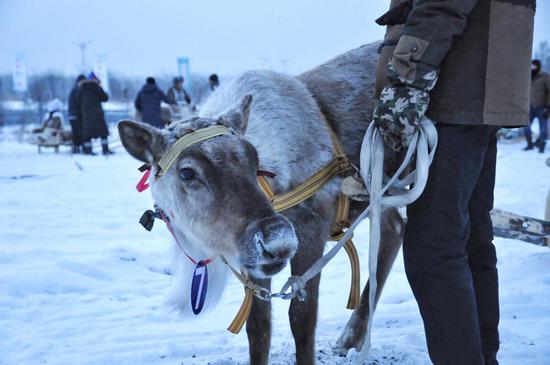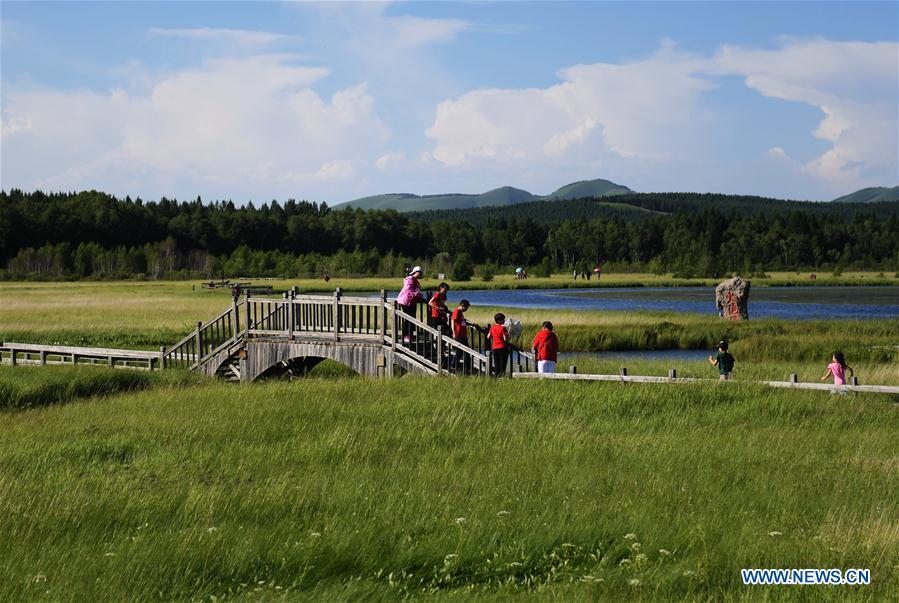
Photo taken on July 11, 2017 shows tourists visiting the Qixing Lake Scenic Area of the Saihanba State Forest Park in Chengde City, north China's Hebei Province. Saihanba is a vast forest covering nearly 75,000 hectares. It was a piece of barren land 55 years ago, but decades of hard afforestation efforts turned it into an important ecological shield for Beijing and Tianjin. China has seen reduced desertification and increased forest coverage since 1978, thanks to the Three-North Afforestation Program (TNAP), said a report released on Dec. 24, 2018. Constructed in the northeast, north and northwest China, TNAP is a national program fighting against soil erosion and wind-sand damage by planting sand-fixing forests. The area of sand-fixing forests has increased by 154 percent in the past 40 years, contributing to the reduction of desertification by around 15 percent, according to a report jointly released by the National Forestry and Grassland Administration (NFGA) and the Chinese Academy of Sciences. Over the past 40 years, TNAP increased the forest area by 30.14 million hectares and raised the forest coverage rate from 5.05 percent to 13.57 percent in the regions it covers, said Liu Dongsheng, deputy head of the NFGA. (Xinhua/Wang Xiao)
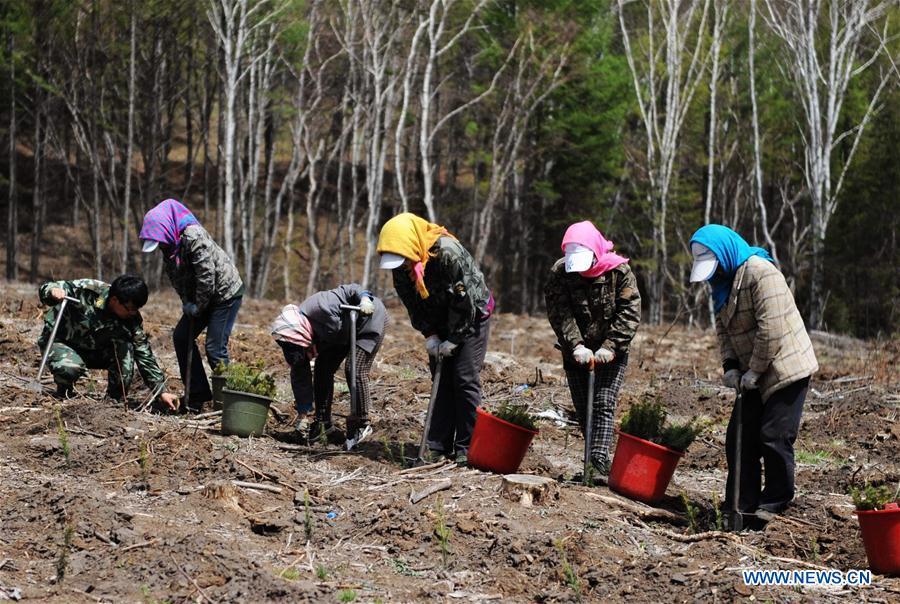
Staff members plant trees at the Saihanba forest in Weichang Man and Mongolian Autonomous County of Chengde City, north China's Hebei Province, May 13, 2014. Saihanba is a vast forest covering nearly 75,000 hectares. It was a piece of barren land 55 years ago, but decades of hard afforestation efforts turned it into an important ecological shield for Beijing and Tianjin. China has seen reduced desertification and increased forest coverage since 1978, thanks to the Three-North Afforestation Program (TNAP), said a report released on Dec. 24, 2018. Constructed in the northeast, north and northwest China, TNAP is a national program fighting against soil erosion and wind-sand damage by planting sand-fixing forests. The area of sand-fixing forests has increased by 154 percent in the past 40 years, contributing to the reduction of desertification by around 15 percent, according to a report jointly released by the National Forestry and Grassland Administration (NFGA) and the Chinese Academy of Sciences. Over the past 40 years, TNAP increased the forest area by 30.14 million hectares and raised the forest coverage rate from 5.05 percent to 13.57 percent in the regions it covers, said Liu Dongsheng, deputy head of the NFGA. (Xinhua/Wang Xiao)
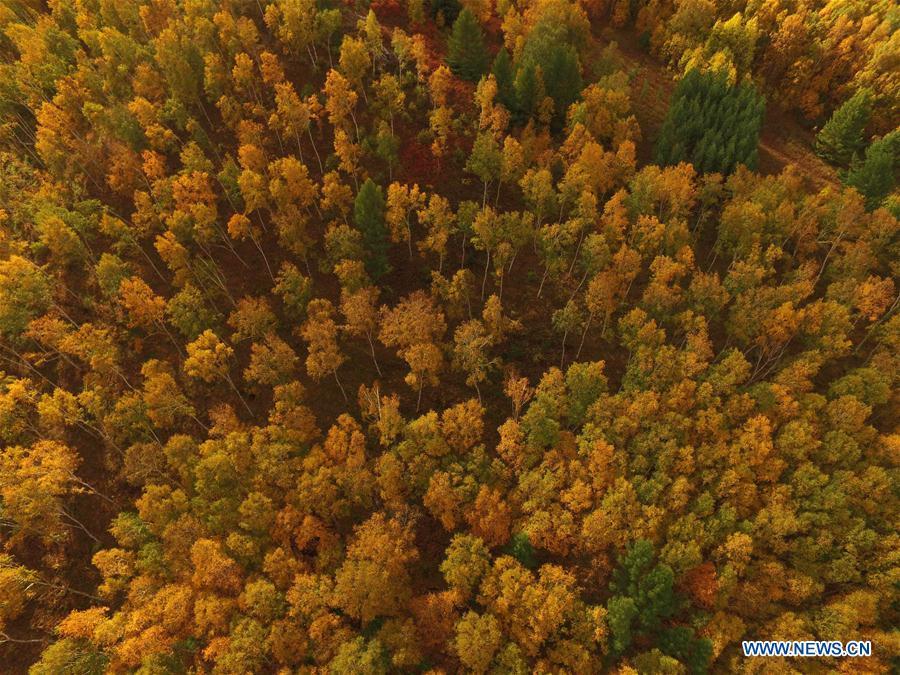
Aerial photo taken on Sept. 22, 2017 shows the autumn scenery of the Saihanba State Forest Park in Chengde City, north China's Hebei Province. Saihanba is a vast forest covering nearly 75,000 hectares. It was a piece of barren land 55 years ago, but decades of hard afforestation efforts turned it into an important ecological shield for Beijing and Tianjin. China has seen reduced desertification and increased forest coverage since 1978, thanks to the Three-North Afforestation Program (TNAP), said a report released on Dec. 24, 2018. Constructed in the northeast, north and northwest China, TNAP is a national program fighting against soil erosion and wind-sand damage by planting sand-fixing forests. The area of sand-fixing forests has increased by 154 percent in the past 40 years, contributing to the reduction of desertification by around 15 percent, according to a report jointly released by the National Forestry and Grassland Administration (NFGA) and the Chinese Academy of Sciences. Over the past 40 years, TNAP increased the forest area by 30.14 million hectares and raised the forest coverage rate from 5.05 percent to 13.57 percent in the regions it covers, said Liu Dongsheng, deputy head of the NFGA. (Xinhua/Liu Huanyu)
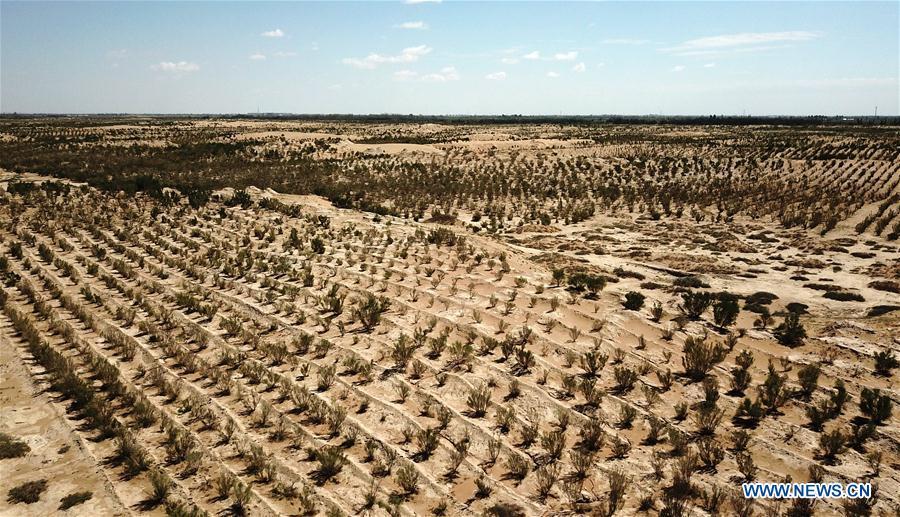
Photo taken on Aug. 25, 2018 shows plants growing in a desertification combating demonstration zone in Minqin County, northwest China's Gansu Province. China has seen reduced desertification and increased forest coverage since 1978, thanks to the Three-North Afforestation Program (TNAP), said a report released on Dec. 24, 2018. Constructed in the northeast, north and northwest China, TNAP is a national program fighting against soil erosion and wind-sand damage by planting sand-fixing forests. The area of sand-fixing forests has increased by 154 percent in the past 40 years, contributing to the reduction of desertification by around 15 percent, according to a report jointly released by the National Forestry and Grassland Administration (NFGA) and the Chinese Academy of Sciences. Over the past 40 years, TNAP increased the forest area by 30.14 million hectares and raised the forest coverage rate from 5.05 percent to 13.57 percent in the regions it covers, said Liu Dongsheng, deputy head of the NFGA. (Xinhua/Chen Bin)
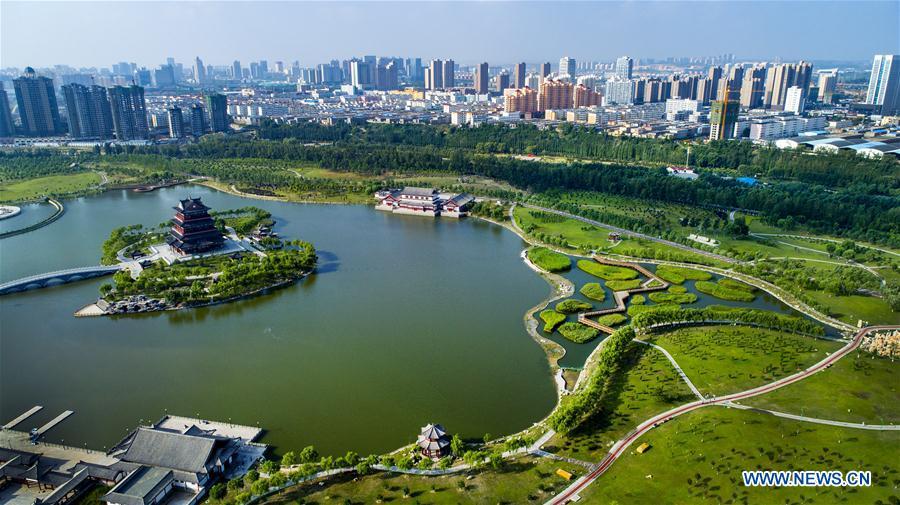
Aerial photo taken on Aug. 2, 2018 shows a view of the Yuxihe Park in the Yuyang District of Yulin City on the verge of the Maowusu Desert in northwest China's Shaanxi Province. China has seen reduced desertification and increased forest coverage since 1978, thanks to the Three-North Afforestation Program (TNAP), said a report released on Dec. 24, 2018. Constructed in the northeast, north and northwest China, TNAP is a national program fighting against soil erosion and wind-sand damage by planting sand-fixing forests. The area of sand-fixing forests has increased by 154 percent in the past 40 years, contributing to the reduction of desertification by around 15 percent, according to a report jointly released by the National Forestry and Grassland Administration (NFGA) and the Chinese Academy of Sciences. Over the past 40 years, TNAP increased the forest area by 30.14 million hectares and raised the forest coverage rate from 5.05 percent to 13.57 percent in the regions it covers, said Liu Dongsheng, deputy head of the NFGA. (Xinhua/Tao Ming)
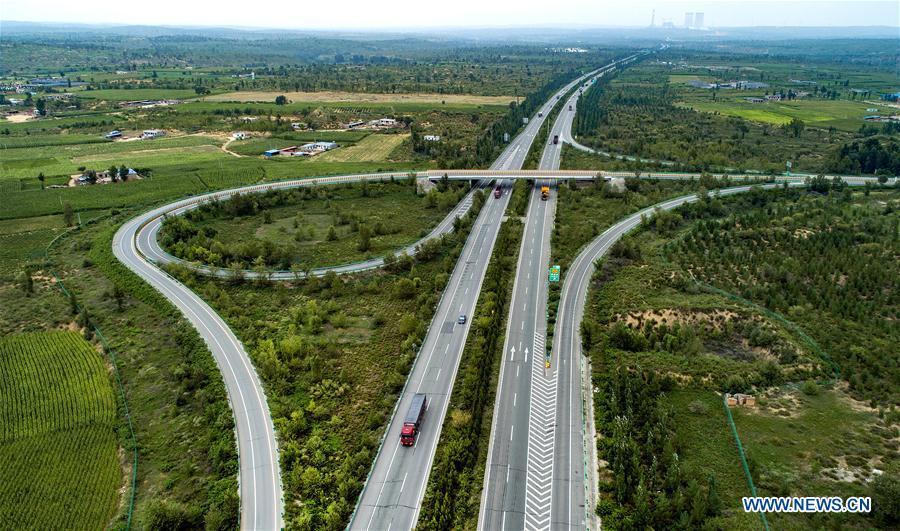
Vehicles run on the Yulin-Jingbian Expressway which runs through the Maowusu Desert, northwest China's Shaanxi Province, Aug. 1, 2018. The expressway is the first of the kind built in a desert in China. China has seen reduced desertification and increased forest coverage since 1978, thanks to the Three-North Afforestation Program (TNAP), said a report released on Dec. 24, 2018. Constructed in the northeast, north and northwest China, TNAP is a national program fighting against soil erosion and wind-sand damage by planting sand-fixing forests. The area of sand-fixing forests has increased by 154 percent in the past 40 years, contributing to the reduction of desertification by around 15 percent, according to a report jointly released by the National Forestry and Grassland Administration (NFGA) and the Chinese Academy of Sciences. Over the past 40 years, TNAP increased the forest area by 30.14 million hectares and raised the forest coverage rate from 5.05 percent to 13.57 percent in the regions it covers, said Liu Dongsheng, deputy head of the NFGA. (Xinhua/Tao Ming)
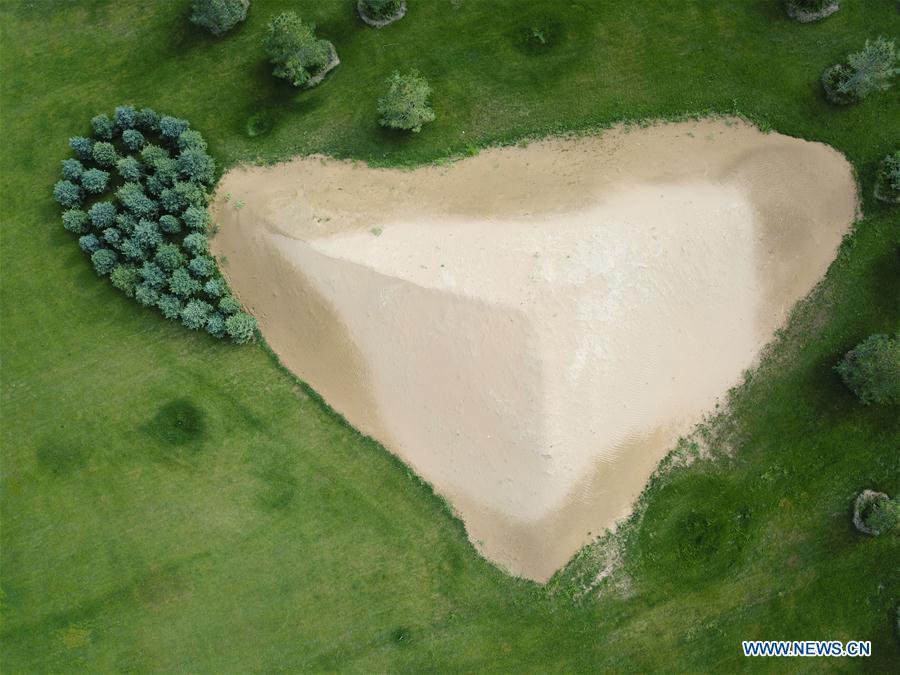
Aerial photo taken on Aug. 1, 2018 shows a sand dune reserved by an eco-technology center at the Kubuqi Desert in Hangjin Banner, north China's Inner Mongolia Autonomous Region. China has seen reduced desertification and increased forest coverage since 1978, thanks to the Three-North Afforestation Program (TNAP), said a report released on Dec. 24, 2018. Constructed in the northeast, north and northwest China, TNAP is a national program fighting against soil erosion and wind-sand damage by planting sand-fixing forests. The area of sand-fixing forests has increased by 154 percent in the past 40 years, contributing to the reduction of desertification by around 15 percent, according to a report jointly released by the National Forestry and Grassland Administration (NFGA) and the Chinese Academy of Sciences. Over the past 40 years, TNAP increased the forest area by 30.14 million hectares and raised the forest coverage rate from 5.05 percent to 13.57 percent in the regions it covers, said Liu Dongsheng, deputy head of the NFGA. (Xinhua/Xing Guangli)
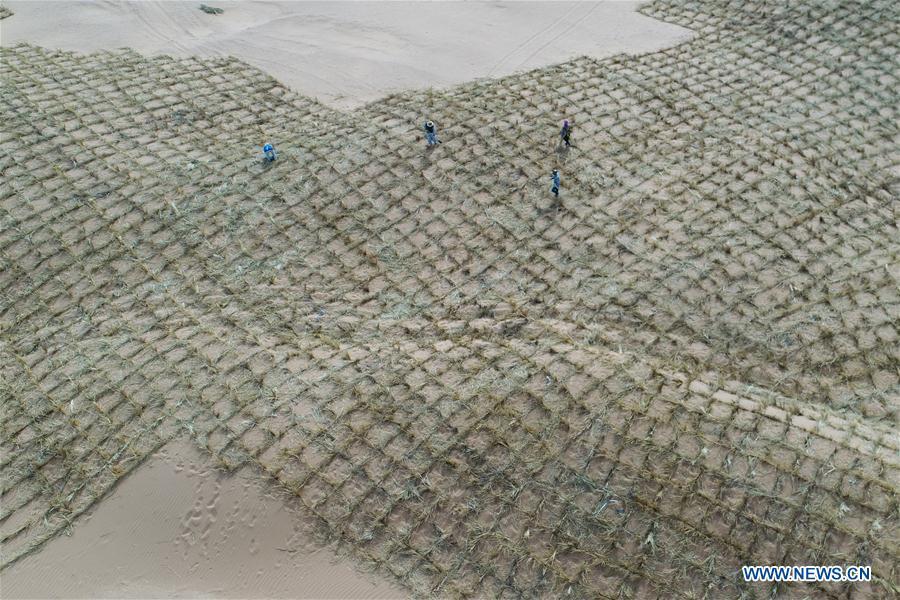
Workers make straw checkerboard sand barriers in the Tengger Desert in the Shapotou District of Zhongwei City, northwest China's Ningxia Hui Autonomous Region, June 11, 2018. Shapotou, whose name was derived from high sand dunes, is located on the southern edge of the Tengger Desert. For half a century, Shaputou is renowned for curbing desertification by mainly making straw checkerboard sand barriers in large scale. China has seen reduced desertification and increased forest coverage since 1978, thanks to the Three-North Afforestation Program (TNAP), said a report released on Dec. 24, 2018. Constructed in the northeast, north and northwest China, TNAP is a national program fighting against soil erosion and wind-sand damage by planting sand-fixing forests. The area of sand-fixing forests has increased by 154 percent in the past 40 years, contributing to the reduction of desertification by around 15 percent, according to a report jointly released by the National Forestry and Grassland Administration (NFGA) and the Chinese Academy of Sciences. Over the past 40 years, TNAP increased the forest area by 30.14 million hectares and raised the forest coverage rate from 5.05 percent to 13.57 percent in the regions it covers, said Liu Dongsheng, deputy head of the NFGA. (Xinhua/Lu Ying)
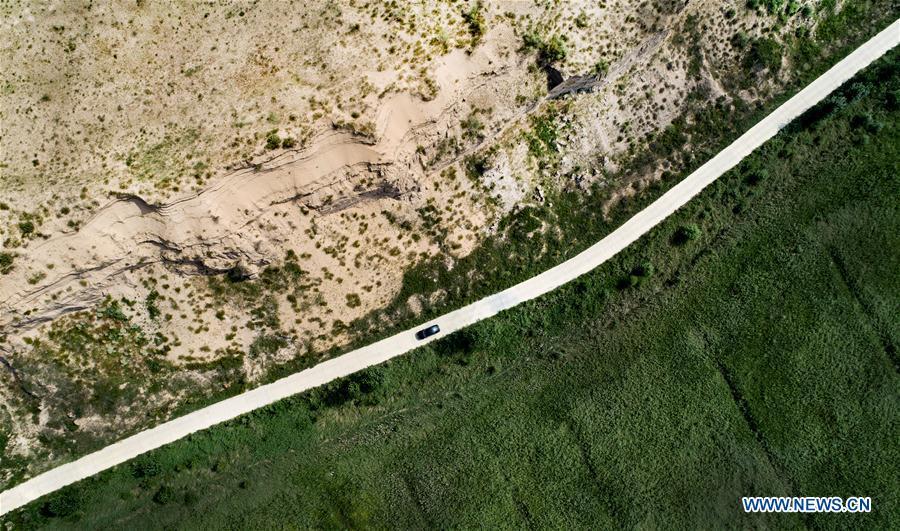
A car runs on a road that divides desert and desert under control in the Hengshan District of Yulin City, northwest China's Shaanxi Province, Aug. 4, 2018. China has seen reduced desertification and increased forest coverage since 1978, thanks to the Three-North Afforestation Program (TNAP), said a report released on Dec. 24, 2018. Constructed in the northeast, north and northwest China, TNAP is a national program fighting against soil erosion and wind-sand damage by planting sand-fixing forests. The area of sand-fixing forests has increased by 154 percent in the past 40 years, contributing to the reduction of desertification by around 15 percent, according to a report jointly released by the National Forestry and Grassland Administration (NFGA) and the Chinese Academy of Sciences. Over the past 40 years, TNAP increased the forest area by 30.14 million hectares and raised the forest coverage rate from 5.05 percent to 13.57 percent in the regions it covers, said Liu Dongsheng, deputy head of the NFGA. (Xinhua/Tao Ming)
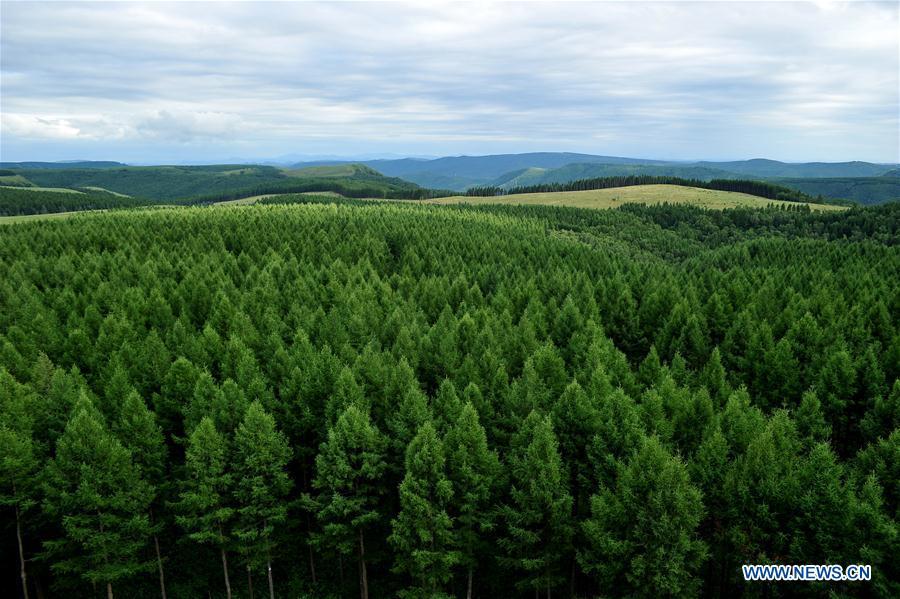
Photo taken on July 28, 2018 shows the scenery of the Saihanba State Forest Park in Chengde, north China's Hebei Province. Saihanba is a vast forest covering nearly 75,000 hectares. It was a piece of barren land 55 years ago, but decades of hard afforestation efforts turned it into an important ecological shield for Beijing and Tianjin. China has seen reduced desertification and increased forest coverage since 1978, thanks to the Three-North Afforestation Program (TNAP), said a report released on Dec. 24, 2018. Constructed in the northeast, north and northwest China, TNAP is a national program fighting against soil erosion and wind-sand damage by planting sand-fixing forests. The area of sand-fixing forests has increased by 154 percent in the past 40 years, contributing to the reduction of desertification by around 15 percent, according to a report jointly released by the National Forestry and Grassland Administration (NFGA) and the Chinese Academy of Sciences. Over the past 40 years, TNAP increased the forest area by 30.14 million hectares and raised the forest coverage rate from 5.05 percent to 13.57 percent in the regions it covers, said Liu Dongsheng, deputy head of the NFGA. (Xinhua/Chen Xiaodong)











